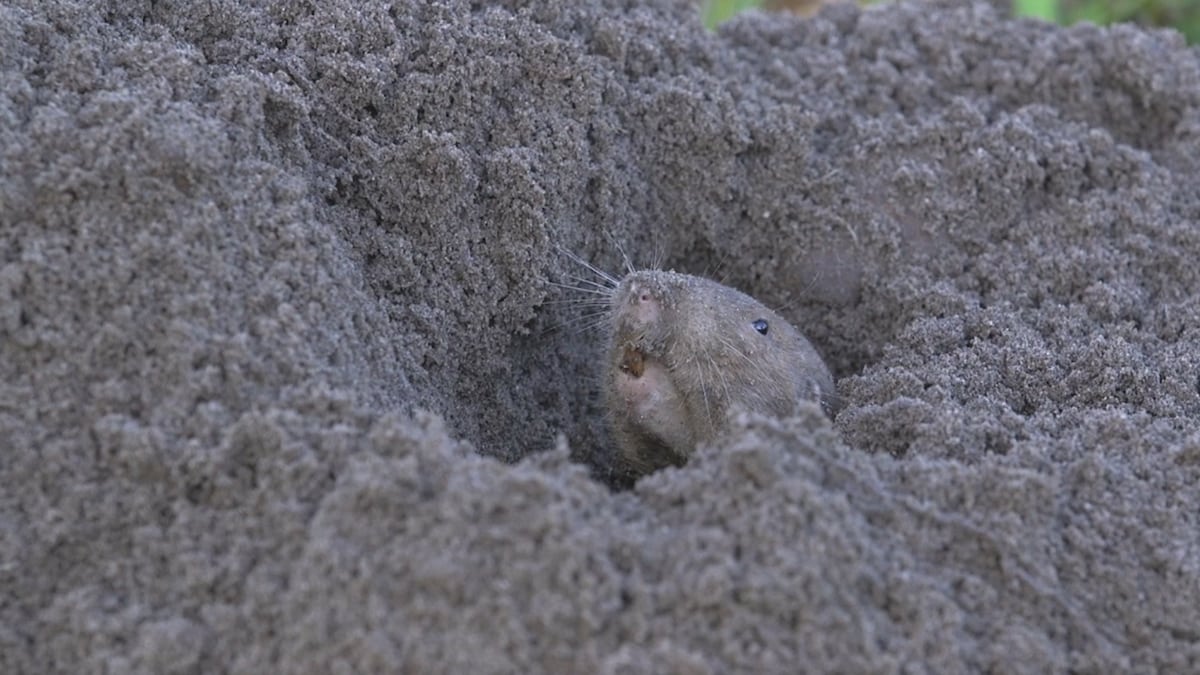Gophers Appear to Be the Only Non-Human Mammal Farmers, Scientists Say

 Why you can trust us
Why you can trust us
Founded in 2005 as an Ohio-based environmental newspaper, EcoWatch is a digital platform dedicated to publishing quality, science-based content on environmental issues, causes, and solutions.
Humans have been farming for thousands of years, but they’re not the only mammal to tend and harvest their crops. A biology professor and an undergraduate student at the University of Florida have discovered that southeastern pocket gophers promote and defend meandering tunnels of underground roots and collect them for food, according to a University of Florida press release.
In their study, recent University of Florida graduate in zoology Veronica Selden and University of Florida professor Jack Putz assert that the gophers’ root-cropping endeavors are a sort of basic farming.
“They’re providing this perfect environment for roots to grow and fertilizing them with their waste,” Selden said in the press release.
The study, “Root cropping by pocket gophers,” was published in the journal Current Biology.
Pocket gophers spend almost their whole lives underground in their self-fashioned labyrinth of tunnels as long as 500 feet, eating the roots of plants — from root vegetables like turnips and potatoes to blueberries bushes and citrus trees — and don’t often cause damage to crops. Their tunnels also don’t erode the ground below.
The nutrition from their daily harvest provides an average of 20 to 60 percent of the gophers’ energy needs, which helps compensate for the enormous amount of energy they use digging through compact soil.
“They live entirely alone in a tunnel system that’s 100 meters long. Dark and wet like a sewer pipe,” said Putz in the press release. “The roots grow in like stalactites and stalagmites. They cover the walls of their tunnel.”
In order to measure roots as they grew back after the gophers had eaten them, for months Selden and Putz attempted to block the herbivorous rodents from getting into their tunnels by damming them with metal or wood, but it didn’t work. The gophers only skirted their blocades.
The pair of researchers finally found something that would work: large drums with the ends removed, which they positioned around a group of the tunnels with one open side in the ground and the other facing up so plants could continue to grow.
Through this method, they were able to figure out plants’ daily root growth and how much the harvesting of root crops contributed to the energy requirements of the gophers.
What Selden and Putz found was that roots gophers may eat while excavating a tunnel don’t make up for the amount of energy it costs to dig it, but when they harvest roots from tunnels that have already been excavated, they have enough energy to carry on plowing through more dirt in the quest for additional food.
But what does “farming” mean?
Pocket gophers protect their crops, but don’t weed or sow them.
“Because [gophers] provide and cultivate this optimal environment for growth — that’s what we think makes them farmers,” said Selden, as The New York Times reported.
However, many animals other than humans and gophers maintain crops they didn’t sow.
Fungus-growing ants cultivate gardens and keep them free of weeds, while using antibiotics produced by bacteria living on the ants themselves, according to scientists from China and the UK.
“Planting the crop, for some people, is what constitutes agriculture,” Putz said, according to the press release. “I think the whole issue is intellectually exciting because it’s not really settled.”
Selden said gophers are key to their habitat and merit more positive recognition.
“Pocket gophers are a lot more interesting than people give them credit for. They’re really important ecosystem engineers,” said Selden in the press release. “They deserve more attention.”
Subscribe to get exclusive updates in our daily newsletter!
By signing up, you agree to the Terms of Use and Privacy Policy & to receive electronic communications from EcoWatch Media Group, which may include marketing promotions, advertisements and sponsored content.

 233k
233k  41k
41k  Subscribe
Subscribe 




